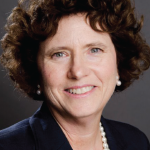
279photo Studio / shutterstock.com
I spent the summer between my first and second years of medical school rotating in medical weight-management clinics, boastful that I would someday be an adult gastroenterologist. I first met Melissa Mannion, MD, in the pediatric clinic; at the time, she was a second-year pediatric resident and always wore cool pants. Born a chatterbox, I asked her about her life plans, and without hesitation, she told me she wanted to be a pediatric rheumatologist.
Full disclosure: I immediately thought she was weird. I knew very little about the specialty and assumed it was a rather bland career path. I couldn’t process how someone as intelligent as Dr. Mannion could get excited about such a dull career choice.
Over the next two years, I migrated toward pediatrics with an interest in oncology or allergy. My advisor suggested I schedule a one-month rotation in pediatric rheumatology. I took her advice, but only because it was one of the few pediatric rotations available, and I remembered Dr. Mannion, the then-fellow who always wore cool pants.
That rotation was without a doubt the most memorable month of medical school. Seeing the passion the department had for rheumatology was, perhaps, the main reason I fell in love with the field. Randy Cron, MD, PhD, and the rest of the University of Alabama at Birmingham crew taught me to treat aggressively, an approach that has earned worldwide attention from fellow rheumatologists. They taught me to trust my exam skills and educated me on the clinical usefulness of ancillary testing. By the end of the month, I was confident in my ability to diagnose and work up a child with arthritis. I even felt bold enough as a medical student to recommend treatment, albeit not always the correct one. And yes, I once arrogantly argued with Dr. Cron about escalation of therapy. He might deny it, but I’m pretty sure I won.
My confidence persisted, and my love for the specialty blossomed during residency. I trained in New Orleans, a city unable to keep up with the growing demands of pediatric rheumatology. In those three years, I remained up to date on the literature and sought out potential rheumatology patients, eager to maximize my exposure.
Why Pediatric Rheumatology
My enthusiasm and knowledge were obvious, and many people inevitably asked the “why” question. Everyone asks me why and how I chose this subspecialty; I struggle to understand why everyone else has not.
 Rheumatologists use the coolest drugs. To think we use chemotherapeutic medications to treat arthritis in children is mind boggling. By treating aggressively, many of our kids go into remission. Imagine giving a therapy to a child with a potentially debilitating chronic illness, and all signs or symptoms of the disease just disappear—amazing! Further, ongoing treatment advancements and new discoveries into the pathophysiology of disease make the opportunities for research endless. I never envisioned myself being a researcher, but now the thought excites me.
Rheumatologists use the coolest drugs. To think we use chemotherapeutic medications to treat arthritis in children is mind boggling. By treating aggressively, many of our kids go into remission. Imagine giving a therapy to a child with a potentially debilitating chronic illness, and all signs or symptoms of the disease just disappear—amazing! Further, ongoing treatment advancements and new discoveries into the pathophysiology of disease make the opportunities for research endless. I never envisioned myself being a researcher, but now the thought excites me.
Pediatric rheumatologists also perform the coolest physical exams. Sure, neurologists have a toolbox of gadgets, but we direct our patients to run in the hallway, walk like a duck and move their joints like human WD-40. Truth be told, sometimes I wear my gym clothes to work.
We direct our patients to run in the hallway, walk like a duck & move their joints like human WD-40. —Dr. Crayne
Work–Life Balance
The specialty itself is indisputably awesome, but what about the lifestyle? In a rainbow-unicorn setting, the ratio of salary-to-work hours would be maximal, and we would report a perfect quality-of-life index. But if money is your primary endgame, you may want to rethink your medical career path. Pediatricians in general make less compared to their adult counterparts, and rheumatologists in general may well be one of the lowest paid medical specialties.
I grew up in an underprivileged home, so financial gain was a non-consideration. Happiness was the most valuable lifestyle consideration to me, which ultimately required more time with my family. Nearly all full-time physicians work more than 40 hours per week, spend several weeks annually on call and spend many hours outside the office completing administrative duties and/or research obligations. This leaves little time for the family.
When I mentally committed to pediatric rheumatology, my firstborn was 6 months old, and I was entering my second year of residency. People said I was crazy, but I wanted a career in medicine that allowed me more time with my kids without sacrificing a full-time workload.
Spoiler alert: It does exist! As a second-year fellow, I now have two beautiful sons and have never missed a nightly dinner, school event or holiday celebration for a work obligation.
I may not wear cool pants like Dr. Mannion, but more often than not, I leave work with a smile, and I rarely regret Monday mornings. When someone asks me, “Why rheumatology?” my response is always the same: “Because I love it. You should, too.”
Courtney B. Crayne is a second-year pediatric rheumatology fellow at the University of Alabama at Birmingham. As a working mom of two boys and an avid runner, she’s often spotted stealing some quick miles around the hospital in between patients.



